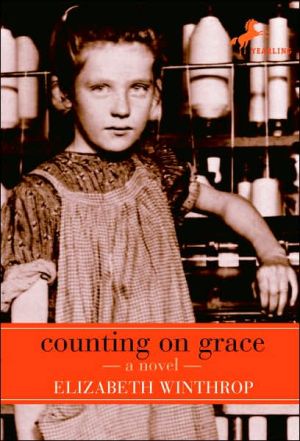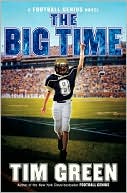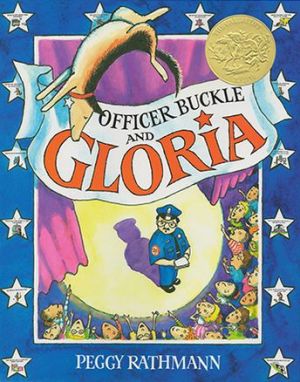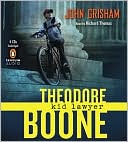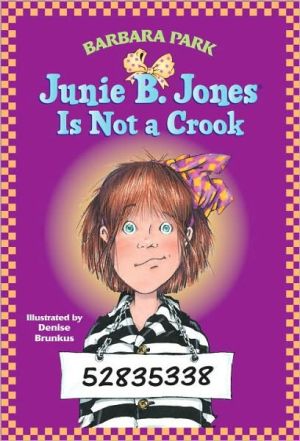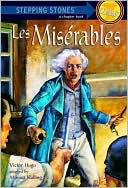Counting on Grace
1910. Pownal, Vermont. At 12, Grace and her best friend Arthur must leave school and go to work as a “doffers” on their mothers’ looms in the mill. Grace’s mother is the best worker, fast and powerful, and Grace desperately wants to help her. But she’s left handed and doffing is a right-handed job. Grace’s every mistake costs her mother, and the family. She only feels capable on Sundays, when she and Arthur receive special lessons from their teacher. Together they write a secret letter to the...
Search in google:
1910. Pownal, Vermont. At 12, Grace and her best friend Arthur must leave school and go to work as a “doffers” on their mothers’ looms in the mill. Grace’s mother is the best worker, fast and powerful, and Grace desperately wants to help her. But she’s left handed and doffing is a right-handed job. Grace’s every mistake costs her mother, and the family. She only feels capable on Sundays, when she and Arthur receive special lessons from their teacher. Together they write a secret letter to the Child Labor Board about underage children working in Pownal. A few weeks later a man with a camera shows up. It is the famous reformer Lewis Hine, undercover, collecting evidence for the Child Labor Board. Grace’s brief acquaintance with Hine and the photos he takes of her are a gift that changes her sense of herself, her future, and her family’s future.Publishers WeeklyThe feisty heroine of Winthrop's (The Castle in the Attic) novel set in a 1910 Vermont mill town brings child labor issues into sharp focus. Twelve-year-old Grace, who narrates, chafes against her teacher Miss Lesley's rules: "Seems she cares more about sitting still than learning." But when Grace must leave school to doff her mother's looms as an underage worker, she yearns for her former challenges. Winthrop effectively lays out the mill town's subsistence economy. Readers will understand why Grace's mother saved her deceased infant's papers in order to fake Grace's age (the child would have been 14, the age requirement for mill workers). One uplifting subplot follows Grace and classroom rival Arthur who become friends and co-workers in the mill and begin secret lessons with Miss Lesley. But the most compelling thread of the novel chronicles the mounting tension between Grace and her demanding mother, who dominates the other workers ("Only thing bigger and bossier than my mother in the spinning room is the frames"). The scene in which Arthur and Miss Lesley write the Child Labor Bureau may be rather forced, but a visit from Lewis Hine, who photographs the underage mill workers, feeding Grace's sense of connection to the world, seems believable. This enlightening novel explores the perils of mill work for children and adults alike. Readers will cheer when Grace uses her smarts to triumph over the mill store's corrupt bookkeeper, and the implication that she could well find a calling outside this mill town. Ages 8-14. (Mar.) Copyright 2006 Reed Business Information.
\ Publishers WeeklyThe feisty heroine of Winthrop's (The Castle in the Attic) novel set in a 1910 Vermont mill town brings child labor issues into sharp focus. Twelve-year-old Grace, who narrates, chafes against her teacher Miss Lesley's rules: "Seems she cares more about sitting still than learning." But when Grace must leave school to doff her mother's looms as an underage worker, she yearns for her former challenges. Winthrop effectively lays out the mill town's subsistence economy. Readers will understand why Grace's mother saved her deceased infant's papers in order to fake Grace's age (the child would have been 14, the age requirement for mill workers). One uplifting subplot follows Grace and classroom rival Arthur who become friends and co-workers in the mill and begin secret lessons with Miss Lesley. But the most compelling thread of the novel chronicles the mounting tension between Grace and her demanding mother, who dominates the other workers ("Only thing bigger and bossier than my mother in the spinning room is the frames"). The scene in which Arthur and Miss Lesley write the Child Labor Bureau may be rather forced, but a visit from Lewis Hine, who photographs the underage mill workers, feeding Grace's sense of connection to the world, seems believable. This enlightening novel explores the perils of mill work for children and adults alike. Readers will cheer when Grace uses her smarts to triumph over the mill store's corrupt bookkeeper, and the implication that she could well find a calling outside this mill town. Ages 8-14. (Mar.) Copyright 2006 Reed Business Information.\ \ \ \ \ Children's LiteratureGrace is a twelve-year-old girl working full-time in a cotton mill in Vermont in the early 1900s. Her French Canadian family immigrated to the U.S. for its opportunities, but with abysmal wages and unethical employers and shopkeepers who prey on the poor, the family has no alternative but to send their children to work. Grace's teacher is furious that "her" children have their futures so limited and reports the mill to the National Child Labor Committee, which results in Lewis Hine arriving to document the plight of the children. This is a compelling story and steeped in important history children should be aware of. The back matter is complete and very interesting reading. 2006, Random House, and Ages 10 to 14. \ —Joan Kindig, Ph.D.\ \ \ VOYATwelve-year-old Grace Forcier narrates this novel about life at a rural Vermont cotton mill in 1910. Bright and independent, Grace is proud of her ability to read and write in English, a rare talent within her poor French-Canadian community. Money overcomes education, however, when Grace is told that she must leave school to begin work at the mill with the other children, some as young as ten. Suspense builds when famed photographer Lewis Hine arrives to take surreptitious photos of the mill for the National Child Labor Committee. This intriguing twist, which is based on true events, offers hope that justice might prevail. The strength of this book lies with its endearing portrait of Grace, who learns by the end of the story that she has a chance to break free from the desperation that has trapped her family in a cycle of illiteracy and poverty. Readers will appreciate the fine attention to historical detail and Winthrop's first-rate prose. An additional feature is a postscript in which Winthrop describes how she found information on a girl who actually worked at the cotton mill portrayed in her novel. The book's only weakness is a lack of resolution for the visit by Lewis Hine. Did the labor committee prosecute the mill owners? Will Grace be forced to return to the mill? A sequel may be necessary to tie up loose ends. Nevertheless this novel is a worthwhile purchase for libraries and schools. VOYA CODES: 4Q 4P M J (Better than most, marred only by occasional lapses; Broad general YA appeal; Middle School, defined as grades 6 to 8; Junior High, defined as grades 7 to 9). 2006, Wendy Lamb Books/Random House, 144p., and PLB Ages 11 to 15. \ —Christina Fairman\ \ \ \ \ School Library JournalGr 5-8-Inspired by Lewis Hine's haunting photograph of a French Canadian girl in Vermont in 1910, Winthrop's compelling story vividly captures the mill experience. Grace Forcier and her friend Arthur, both 12 and the best readers in the mill school, are forced to suspend their educations to doff bobbins for their mothers' frames in the spinning room. While this is difficult for left-handed Grace, Arthur is desperate to escape the stuffy, sweaty, linty, noisy factory. Miss Lesley, their teacher, helps them write a letter to the National Child Labor Committee about underage kids, as young as eight, working in their mill. Grace understands the dilemma a response will cause. If the children don't work, the families won't have enough money to survive. Lewis Hine is the answer to the letter. He comes and photographs the mill rats, as the kids are called; no one will believe the conditions without pictures. Arthur, however, can wait no longer to carry out his escape plan. In a horrifying scene, he jams his right hand into the gearbox of the frame, painfully mangling it and losing two fingers. Miss Lesley's interference causes her to be fired, and she encourages Grace to be the substitute teacher, leaving readers with a sense that she will escape the mill and have a better life. Much information on early photography and the workings of the textile mills is conveyed, and history and fiction are woven seamlessly together in this beautifully written novel. Readers won't soon forget Grace.-Connie Tyrrell Burns, Mahoney Middle School, South Portland, ME Copyright 2006 Reed Business Information.\ \ \ \ \ School Library JournalGr 5-8\ Elizabeth Winthrop's novel (Wendy Lamb Books, 2006) is set in 1910 Vermont. At first, 12-year-old Grace and her family are thrilled that she's leaving school to work in the mill. The pennies that she earns will help the family get out of debt. Grace works as a doffer at the mill, but she's left-handed and finds the work difficult. When Lewis Hines, photographer-reformer, comes to the mill, the lives of Grace and her friend Arthur change. They work secretly with the child labor commission to expose the conditions at the mill. Frequent background music and Lili Gamache's frantic narration during dramatic plot turns sometimes makes it difficult to follow the story. Bonus features include an interview with the author detailing her research and writing process. An excellent blend of history and fiction.\ —Karen T. BiltonCopyright 2006 Reed Business Information.\ \ \ \ \ \ Kirkus ReviewsTwelve-year-old Grace is proud to be one of the best readers at school, but she's pulled out to be a doffer at the mill, her parents happy to have the extra money coming in. Then Miss Lesley, her teacher, conspires to contact the National Child Labor Committee about the hiring of underage children in the mills. Lewis Hine, the now-famous photographer for the NCLC, arrives to document conditions and ends up befriending Miss Lesley, Grace and her friend Arthur. Inspired by a Hine photograph of a young Vermont mill girl, Winthrop has woven a fine story to complement Hine's visual document. She vividly portrays mill life and four characters who resist its deadening effects. Readers familiar with Katherine Paterson's Lyddie (1991) will see a kindred spirit in Grace Forcier. Solid research and lively writing make this a fine historical novel, a perfect companion to Russell Freedman's Kids at Work (1994). (about Lewis Hine, the story behind the photograph, bibliography) (Historical fiction. 8-12)\ \
